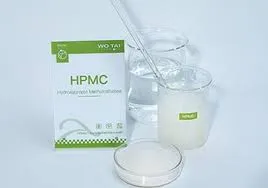
Sep . 15, 2024 00:21 Back to list
cellulose ether
Understanding Cellulose Ethers A Comprehensive Overview
Cellulose ethers are a diverse group of chemical compounds derived from cellulose, the most prevalent organic polymer found in the plant kingdom. These ethers have found extensive applications across various industries due to their unique properties, including thickening, emulsifying, and stabilizing capabilities. This article delves into the structure, properties, and applications of cellulose ethers, shedding light on their significance in modern technology and manufacturing.
Structure and Production
Cellulose is a polysaccharide composed of repeating glucose units linked by β-1,4-glycosidic bonds. To create cellulose ethers, hydroxyl groups (-OH) on the cellulose chains are replaced with various alkyl or aryl groups through a chemical reaction known as etherification. Common cellulose ethers include carboxymethyl cellulose (CMC), methylcellulose (MC), and hydroxypropyl methylcellulose (HPMC). The degree of substitution and the type of substituent group significantly affect the solubility, viscosity, and functionality of the resulting cellulose ether.
Physical and Chemical Properties
Cellulose ethers possess a range of unique characteristics that make them valuable in numerous applications. One of their most noteworthy properties is their ability to form viscous solutions when mixed with water, which is particularly useful in thickening agents in various formulations. The solubility of cellulose ethers can be significantly influenced by factors such as temperature, pH, and the molecular weight of the compound. Low-viscosity cellulose ethers are often employed in applications requiring fluidity, while high-viscosity varieties are used in applications demanding gel-like textures.
cellulose ether

Moreover, cellulose ethers exhibit excellent film-forming properties, which enable them to serve as effective binders in adhesives and coatings. Their compatibility with a wide range of substances, including other polymers and active ingredients, further enhances their versatility.
Applications Across Industries
The applications of cellulose ethers span various sectors, including food, pharmaceuticals, cosmetics, and construction. In the food industry, CMC is commonly used as a thickener and stabilizer in sauces, dressings, and ice creams, contributing to texture and mouthfeel. In pharmaceuticals, cellulose ethers serve as binders and film-forming agents in tablet formulations, ensuring the controlled release of active ingredients.
In cosmetics, these compounds contribute to the stability and texture of lotions, creams, and gels. They provide a smooth application while enhancing the overall product performance. The construction industry also relies on cellulose ethers as additives in cement and mortar, improving workability and water retention, thereby enhancing the durability of various structures.
Conclusion
In summary, cellulose ethers are crucial compounds with a wide range of applications owing to their unique properties and functional capabilities. Their adaptability makes them indispensable in multiple industries, advancing both technological and consumer needs. As research progresses, the potential for new cellulose ether derivatives continues to expand, promising exciting developments in product formulation and performance in the coming years.
-
tile-bonding-additives-for-stronger-bonds
NewsAug.22,2025
-
construction-grade-rdp-for-wholesale-needs
NewsAug.22,2025
-
trusted-wholesale-hec-partners
NewsAug.22,2025
-
hec-solutions-for-industrial-excellence
NewsAug.22,2025
-
construction-additives-need-hpmc-essentials
NewsAug.22,2025
-
hpmc-versatile-cellulose-ether-for-industries
NewsAug.22,2025







